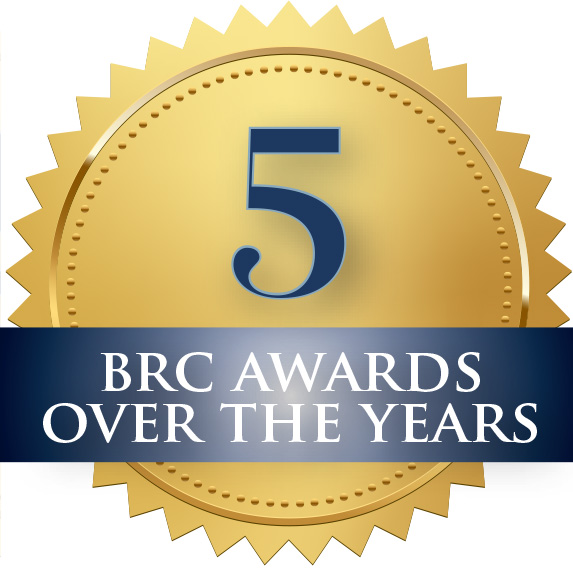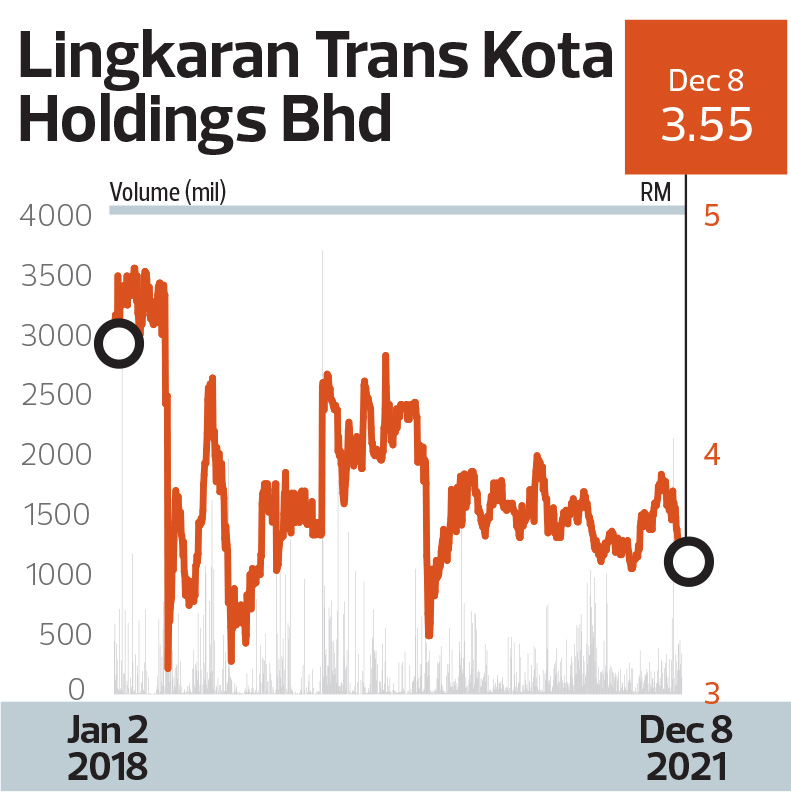
This article first appeared in The Edge Malaysia Weekly on December 27, 2021 - January 2, 2022
Lingkaran Trans Kota Holdings Bhd (Litrak) has managed to outdo rivals with its solid return on equity (ROE) to shareholders over the last three financial years.
Litrak’s weighted ROE over the last three financial years stood at 27.1%, the best in the transportation and logistics sector. However, its ROE had trended down over each of those years, from 29.7% in the financial year ended March 31, 2018 (FY2018) to 26.9% in FY2019 and 26.1% in FY2020, even as the highway concessionaire’s net profit climbed steadily.
Litrak’s net profit grew 14.6% to RM261.9 million, a record high earnings in FY2020 compared with RM236.1 million in FY2019. The group attributed the increase in earnings to lower finance costs and maintenance expenses.
For FY2018, its net profit stood at RM228.6 million.
Over the same period, its net asset per share increased to RM2.02 from RM1.56. Meanwhile, the group’s borrowings were pared down from RM1.13 billion in FY2018, to RM780.74 million in FY2020.
Note that Litrak’s FY2020 ended less than one month after the government imposed the first Movement Control Order (MCO) to curb the Covid-19 outbreak.
That said, the intra-city toll road operator did not have a lucky escape from the lockdown.
Litrak’s net profit uptrend over the last few years was broken in FY2021, no thanks to the pandemic and various movement restrictions that kept motorists off the road.
That year, its net profit slipped 21.4% year-on-year (y-o-y) to RM205.8 million, even as its revenue slumped to RM392.8 million from RM503.8 million before.
The group’s two major tolled highways in the Klang Valley — namely, the Lebuhraya Damansara-Puchong (LDP) and the Western Kuala Lumpur Traffic Dispersal Scheme (SPRINT) — used to be well-utilised prior to the pandemic, as they provide important inter-urban connectivity.
“Our [FY2021] financial year began with an unenviable steepest drop in tollable traffic volumes for LDP and SPRINT ever registered in the history of the group,” its chairman Tan Sri Ambrin Buang said in its latest annual report.
Given the various lockdowns throughout that year, the average weekday tollable traffic on the LDP dropped to 353,000 vehicles from 447,000 in FY2020, while that on SPRINT dropped to 126,000 vehicles from 199,500 before.
To mitigate the financial impact during the lockdowns in FY2021, Litrak — whose biggest shareholder is Gamuda Bhd with a 43.2% stake — cut operating costs and undertook a staff headcount optimisation programme. Additionally, Litrak’s board of directors voluntarily opted for a 10% reduction in fees that year while its higher management saw temporary salary reductions.
Despite the challenges, it managed to declare a dividend per share of 20 sen compared with 25 sen in FY2020.
Going forward, barring any more unexpected lockdowns, Litrak’s prospects look brighter now that the economy has progressively been opening up, and inter-state travel has resumed.
In 2020, the government froze toll rate hikes for all highways that had been eligible for an increase that year. As such, toll rates on the LDP and SPRINT highways remained the same, but there is expected to be compensation payable by the government.
According to Litrak, there are no further scheduled toll increases for the LDP until the end of the concession period (2030); hence, revenue growth can only be achieved by tollable traffic growth.
However, for SPRINT’s Damansara Link and Kerinchi Link, there is still one remaining scheduled toll rate increase for both toll plazas in 2022. As such, revenue growth can be expected from both tollable traffic growth and toll rate increases.
It will be interesting to see how Litrak performs in 3QFY2022, as that is when much of the economy had already opened up.
In 1HFY2022, given movement control restrictions, its net profit fell 22.8% to RM75.4 million. This was however within analysts’ expectations.
Maybank Investment Bank Research notes that, as a pure tolled highway concession group, Litrak’s ESG (environmental, social and governance) risks are low, with no major reported deviations observed over the years.
“We like the stock due to its strong cash flows. Its dividend capacity will rise as debts of the LDP are repaid [fully in FY2024],” it said in a Sept 22 report. It currently has a “buy” call and RM4.85 target price on the stock.
Save by subscribing to us for your print and/or digital copy.
P/S: The Edge is also available on Apple's App Store and Android's Google Play.


